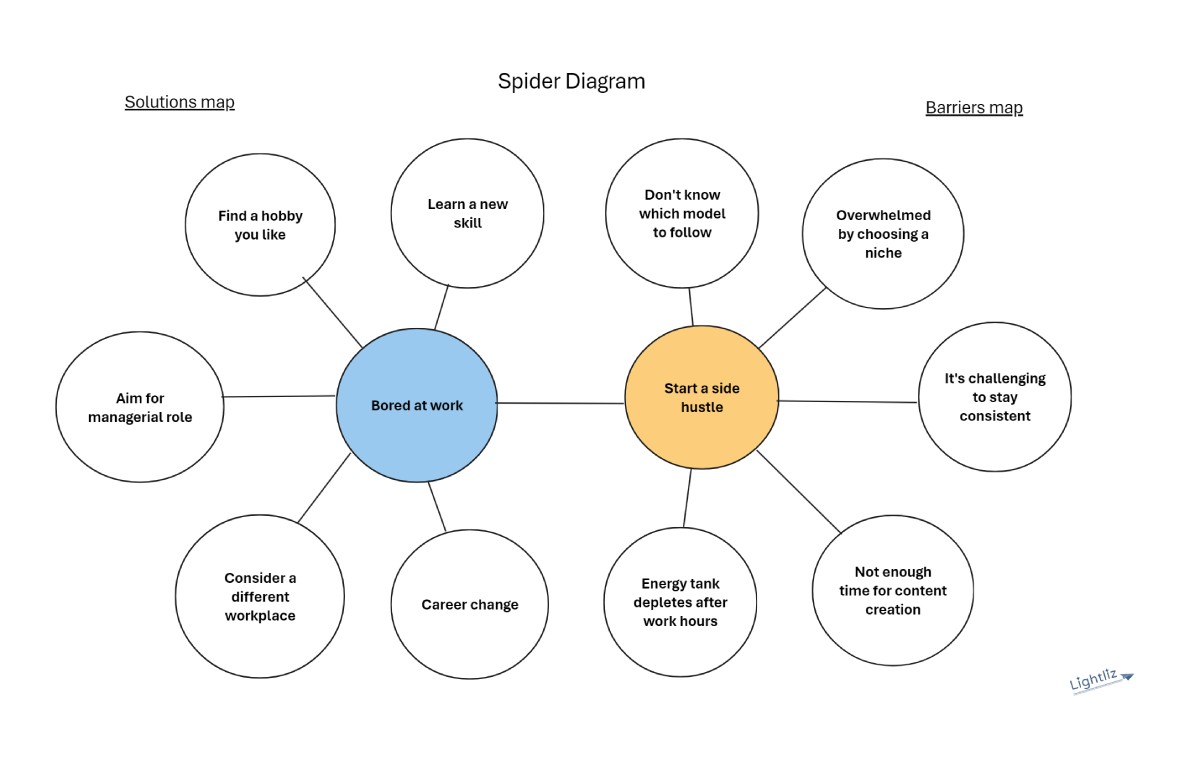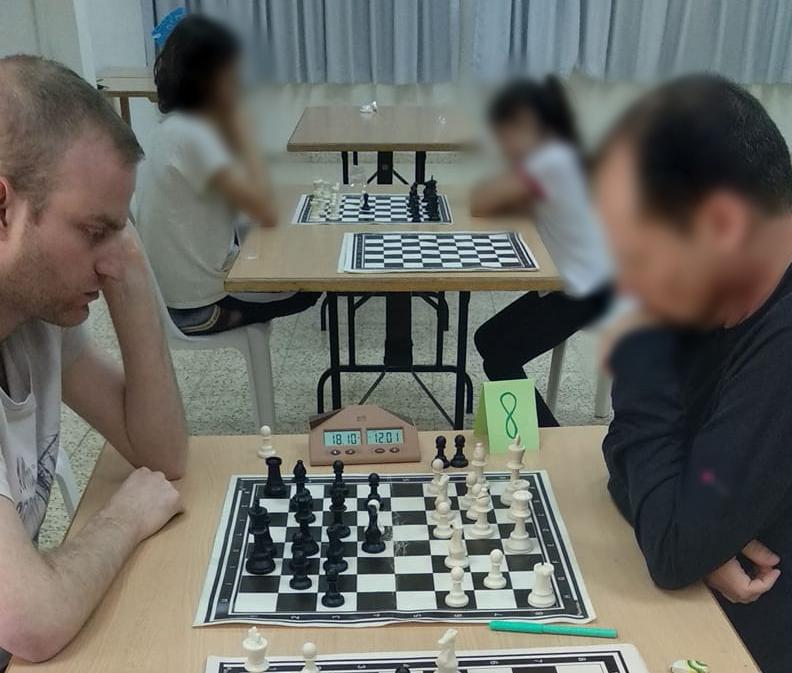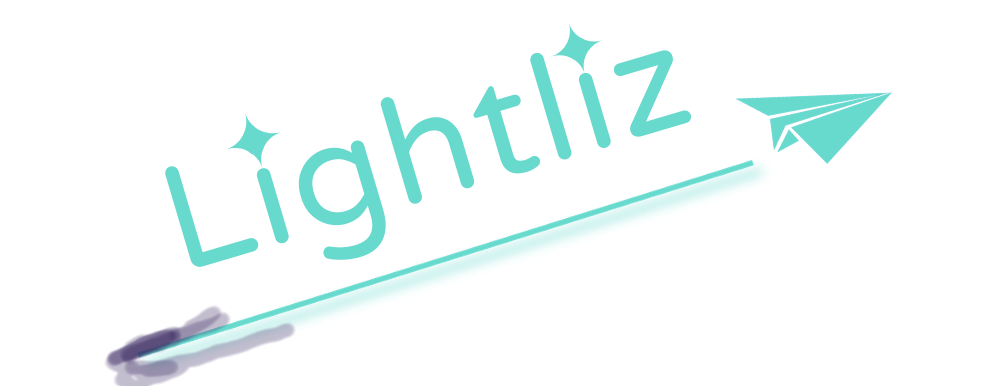If you feel overwhelmed by a problem, you’re not alone. We all face challenges, big and small, on various fronts – our jobs, relationships, businesses, side hustles, or you name it.
I know how frustrating it can be to have conflicting interests or external barriers that hold you back.
I walked through the motions for years without a clear goal forward. My core life problems, like my mediocre back-office career, lack of purpose, and noisy apartment, were repressed, with the hope they would solve themselves somehow.
Guess what? It didn’t happen, and I remained frustrated and bitter about my life.
I felt overwhelmed every time I tried to approach these problems. Fortunately, I discovered at some point the power of journaling, which turned everything for me.
Since I bought a cozy old-school physical notebook (Amazon affiliate link) and started journaling, I felt relieved. It gave me a clearance that broke down each big problem I dealt with into smaller parts, helping me better think of a solution.
This guide will give an overview of my favorite journaling techniques for problem-solving, ordered by step. Some methods I discovered online, and others I developed myself through my journey.
Each step builds on the previous one, as it worked for me when I faced practical problems. So, follow them all to get the most out of your journaling. As a bonus, I include 11 journal prompts to help you get started.
Are you ready? Let’s dive in.
Disclaimer : The information provided in this article is for educational purposes only, and doesn’t substitute professional advice. Results may vary. The article may contain affiliate links. See the full disclaimer for more details.
7 Journaling steps for problem-solving

1. Thoughts and emotions release
The first step is free journaling, which has already solved half of the problem. By releasing all thoughts and emotions related to that problem, you clear your mind and become able to tackle it properly.
Problems often come with a cocktail of emotions – frustration, anxiety, or even repressed rage. Journaling allows you to acknowledge and explore these feelings.
Research has shown that releasing these emotions through journaling helps reduce stress and better cope with depression 1.
Before anything else, journaling has helped me cope with my mind-body response to various situations as a highly sensitive person. This game-changer has raised my awareness of emotions and helped me gain control over my life.
So, the first critical step in journaling is releasing your thoughts and emotions about the current problem. Then, you’ll start acknowledging the hidden fears that hold you back from moving forward.
Addressing those underlying fears is your next step.
2. Fears dump
You’ll be surprised that sometimes what is holding you back is not other than pure fear.
For example, two years ago, I was looking for an apartment to move into, which scared me, but as a rational person, I first outlined the practical factors.
Many practical factors decide where and what kind of apartment to rent. However, only through my freestyle journaling sessions did I realize that my fears were holding me back from moving. This is why I now order the fear dump step before the rational concerns about the problem.
I’ve discovered I feared being evaluated by the apartment’s possessor. I felt insecure because I didn’t have a stable cash flow as a freelancer and beginner creator then. I also feared this kind of interview-like vibe because I am an introvert.
The lesson from this is that you may soon realize that beyond the practical concerns, there is the fear layer that needs to be addressed.
Make a list of your fears for each problem you face. Try to imagine yourself doing the thing you plan and map the different aspects of it—the social interaction, the financial limitations, previous experience in that field, and so on.
Dumping all your fears related to the problem can help you more easily access its practical aspects.
3. Pros and cons

Now, we get into the rational analysis of the problem. Not surprisingly, the first technique available for that is pros and cons.
As the terms imply, you make a list of the advantages and disadvantages of each decision. After doing so, you can better make an informed decision.
For example, I was pondering renting an apartment in the city or a nearby town. I have everything available in the city: public transportation, bars, restaurants, and café places to work outside.
However, the city is also very noisy, with all the tracks, parties, and dense city blocks. At the same time, living in a town has the opposite pros and cons—a quiet place but a long drive to civilization.
This is just one example, of course. Try to list the main arguments for each side of the table. Be cautious, though. Separate the wheat from the chaff; otherwise, the pros and cons might overwhelm you.
Now, when you have the table with the arguments for and against the decision, it’s time to reevaluate your decision. Be as cold and rational as possible, and write down your conclusion.
Through my experience, I learned that this step alone is not enough. Many write the pros and cons and get even more overwhelmed. So, you must follow the following steps to feel better about your decision.
On other occasions, the problem is more than just decision-making. It consists of different issues you need to overcome.
For example, you might not be sure what comes first—applying to a new job, moving to an apartment, or breaking a toxic relationship. When such problems coexist, you must also use other techniques.
This is another reason why the following steps are critical to solving a problem, especially the more severe and complex problems in life.
4. Prioritization
Now, it’s time to prioritize your interests. What is a must-have, and what is essential yet you can compromise on in some circumstances? Then, list the second and third interests and move on as needed.
By interest, I mean values or practical concerns that play a vital role in your decision-making.
Regarding my apartment search, for example, I can’t compromise on a quiet place. This is a must-have for me. I’ve lived in so many noisy apartments that I can’t stand them anymore.
A good breeze through the window is also essential to me, but it’s second to quiet. Living in a brand new or renovated house is necessary, too, but third to the first two interests.
As you list your priorities, you become aware of nuances you wouldn’t be able to know without the journal. In that sense, writing is not only about organizing your thoughts but also helps you think better 2.
In other words, you might not be familiar with your interests and their importance until you write them down.
Without getting too philosophical here, let’s go back to practice for the next step – brainstorming.
5. Brainstorming
Sometimes, we feel stuck in a rut. It’s not just a confusing decision; our problem is so complex we can’t even approach it.
This is where brainstorming journals come into play. It lets you freewheel with ideas.
Write down every aspect of the problem that pops into your head, no matter how strange. You do not need to repeat your thoughts and fears from previous steps.
Instead, here, we talk about the practical barriers to the problem—not enough cash to buy a laptop to change work locations or time you don’t have to invest in the new hobby you are passionate about—this kind of stuff.
Then, start developing your potential solutions to the problem. Don’t expect them to be perfect yet; write them down. As mentioned earlier, think as you write.
To brainstorm effectively, you can either list barriers and solutions or use the spider journaling diagram 3. With the latter technique, you write an idea in a circle at the center of the paper and then write a related notion in another circle nearby.
You then connect them with a line and move on to the next component until you have a spider (the initial idea) with many legs all over your paper (the related ideas). I find this method effective because it is associative and helps you map ideas and aspects of the problem and solution you wouldn’t have thought of initially.
It should be looking like this (click the diagram to zoom in):

You can get the bigger picture and craft the fix for the problem out of the various barriers and solutions. Remember, it’s still a first draft, but that is closer to the solution than your starting point.
I like the brainstorming technique because it allows me to see the bigger picture and shift perspectives if necessary. You could get stuck if you consider only one viewpoint. Journaling allows you to step into someone else’s shoes.
6. Practical compromises
At this point, you should have a definitive overview of your problem: the thoughts and fears that hold you back, your prioritized interests, the barriers you face, and some potential solutions. This is already progress, and I hope you appreciate it and feel a bit more able to deal with the problem now.
At the same time, to reach a practical solution to your problem, you need to compromise on some of your interests. I learned this lesson the hard way when I got stuck or made poor decisions due to an idealistic mindset.
I’m not saying this because life might throw things at you that will change your plan (a different scenario that can always happen); instead, your plan itself can’t be practical if it contains all you want.
As the old phrase says, you can’t have your cake and eat it.
To succeed in life, you must agree to invest less time and energy in some areas, such as your hobbies or ambitious business ideas, if you just had your first child.
That principle applies to different conditions, from pursuing goals to solving concrete, mundane problems. There will always be something you need to settle on.
So, grab your prioritization journal and ask yourself what you can compromise from your solution plan. Write what you are not willing to compromise on a different list.
Being able to settle reduces the risk of disappointment when you head to tackle the problem.
This realistic approach came out of a lesson I learned the hard way when I chose noisy apartments in the past because I haven’t reconciled a renovated house, location, etc.
Unless you are lucky, sticking with all your interests and solving your problem is challenging. Often, you need to settle on some of your interests.
7. Plan your next moves

Once you better understand the problem and a range of potential solutions and prioritization, start crafting your action plan.
Don’t jump to this step before completing the previous ones, as you’d lack the solid overview you reached in these steps.
Now, look at the information in your journal and write down specific steps you can take, along with deadlines and contingency plans.
Try to imagine your next moves in practice and list them in the correct order.
What can you do now, and what tomorrow?
Who must you consult with to understand the problem better and start dealing with it?
Finally, you can consult ChatGPT or Gemini on your action plan—something I sometimes do, which has helped me see my plan more objectively. Take the bots’ advice with a grain of salt, though, as they aren’t aware of your personality and any needs you might not have noted in the chat.
At the end of the day, only you can know what the solution to your problem is. It could also be that you were wrong about some aspects or priorities you journal about, but this is the way you know yourself better.
Through more journal sessions, trial and error, and self-reflection, you can become a better problem solver and improve your life.
11 Journal prompts for problem-solving
If you need help getting started, here are some journal prompts to spark your problem-solving. Some prompts align with the techniques I outlined before, and others are general starters to help you tackle the problem better.
- In simple words – what exactly are you struggling with?
- How does this problem make you feel?
- List your fears about solving the problem. What past experiences shaped them?
- What are some of the potential consequences of inaction?
- What can happen in the worst scenario when solving the problem? What is the likelihood of that?
- Pay attention to whether the problem you journal about may indicate an underlying problem that you need to tackle. If so, start journaling again about this problem.
- Imagine you have all the money and resources you need. How would you solve this problem?
- Look now at the practical constraints—how can you overcome them, and if not, how can you tackle the problem within the current limitations?
- Go back in time – how did you solve similar problems? What did you do? What was your mindset at that point?
- What solutions to the problem already exist and can help you, at least to some extent?
- List people you trust or can pay for to get advice or practical help solving the problem.
Final notes
Our brains are constantly overwhelmed with information. Journaling allows you to dump those swirling thoughts onto the page, creating space for clarity and focus.
The journal steps I outlined in this blog post helped me solve some of my biggest problems with my apartment, side hustle, work-life balance, dating, and much more.
Instead of overthinking your problems, you write them down. This is the magic of journaling.
That alone, even if you don’t know the journal techniques and without using any prompts, can be a relief. Dumping all your overwhelming thoughts, fears, and emotions tied to your current problem is invaluable.
Journaling also helps you see the problem from a new perspective and identify underlying issues you wouldn’t be aware of without visualizing them on paper.
As a blogger, I feel that I better understand the world by writing about my journey of self-discovery. This is one of the reasons I started the blog in the first place. However, I even need a personal journal to clear my daily matters, emotional bursts, or big practical problems I need to confront.
Remember, journaling is a personal journey. What works for me might not work for you. Try the techniques and prompts I outlined to see what helps you tackle the problem.
Try to be as honest and open with yourself as you journal. Nobody is supposed to see your notebook afterward, so let everything go out on paper.
Another significant use of journaling is finding your purpose in life—not your problems, but your dreams and goals (and how to pursue them). Check out this guide to start defining your purpose.
Shachar is a blogger and sensitive person who worked in a recruitment company and holds a master’s degree in sociology. After years of struggles to find purpose, he made this blog to help others find their purpose more efficiently. He likes to play chess, walk in nature, and take photos in his free time.
- Journaling for Emotional Wellness, University of Rochester Medical Center[↩]
- Writing as a Thinking Tool, Metropolitan State University of Denver[↩]
- How spider diagrams can help you organize your best ideas, Georgina Guthrie, Nulab[↩]


